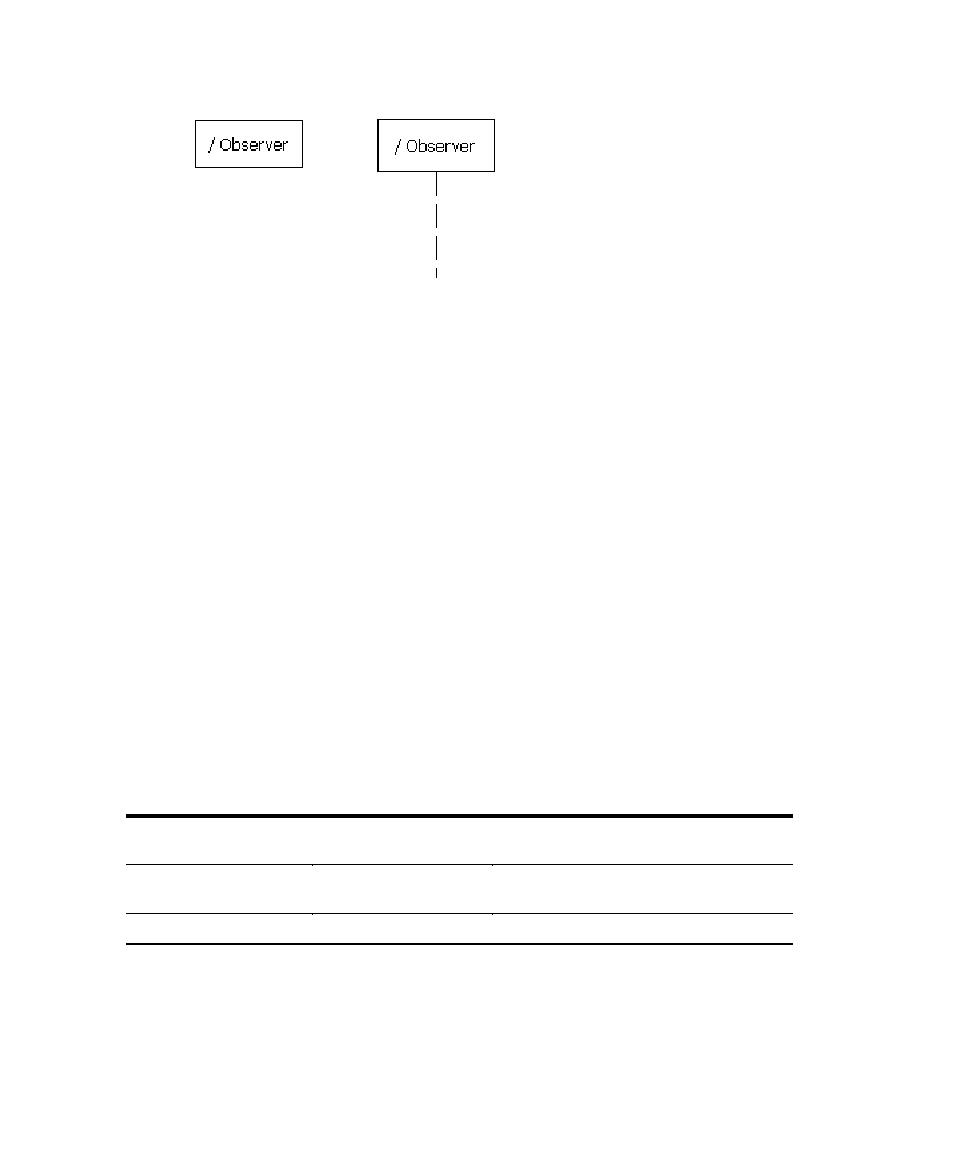
Using Classifier Roles
instance in an interaction. Using classifier roles instead of objects can provide
two advantages: First, a class can serve as the base classifier for multiple
classifier roles. Second, instances of a class can realize multiple classifier roles in
one or more collaborations.
must ultimately fulfill a role in the pattern. The classifier role shows how the
object will participate in the pattern, and its reference to a base class defines the
attributes and operations that are required for participation in the pattern.
When the pattern is used in the model, classes are bound to the collaboration to
identify the type of objects that realize the classifier roles.
appear in sequence diagrams.
omit one of the names. The following table identifies the variations of the naming
convention.
not defined.